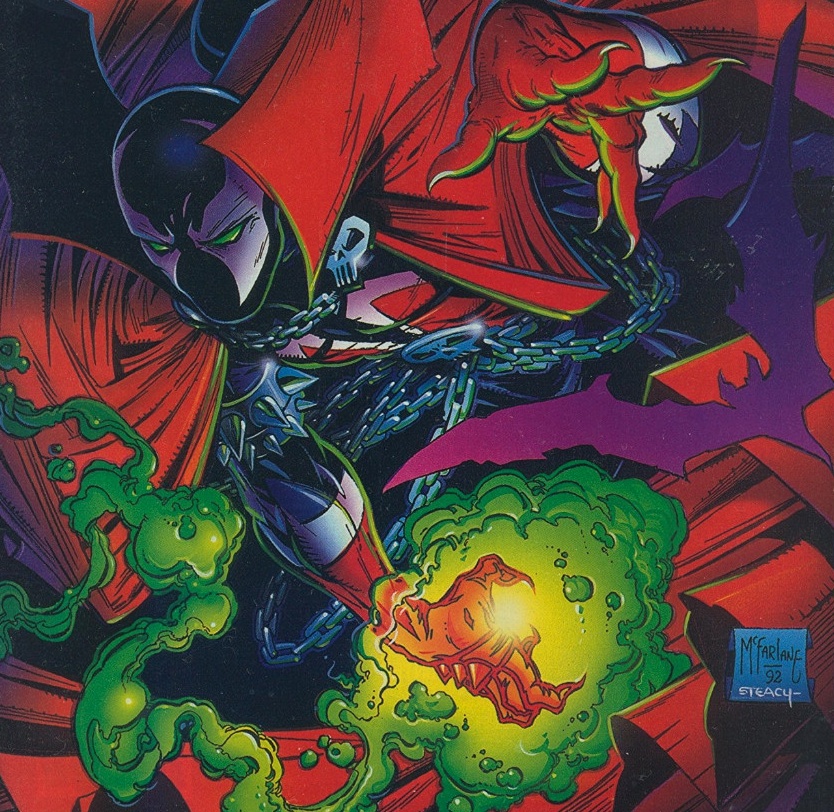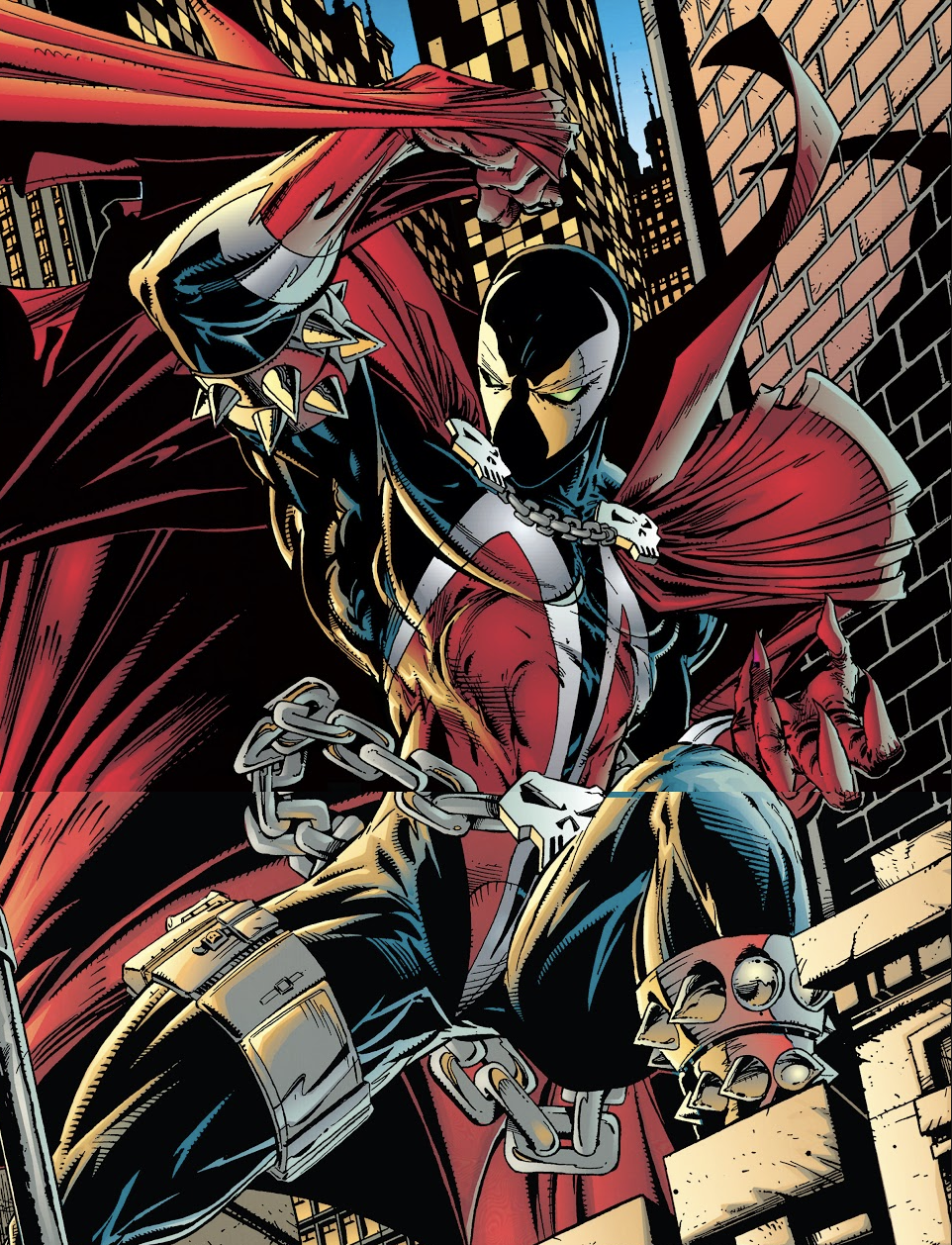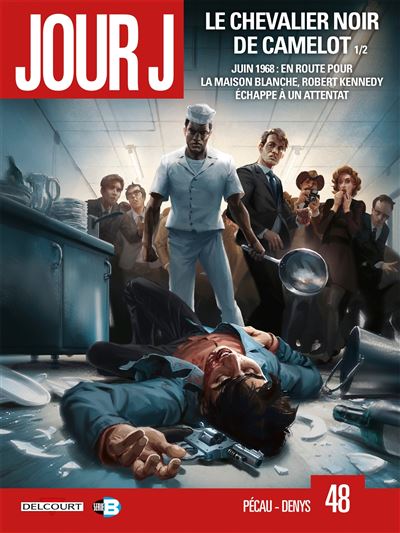For the thirty years of the Spawn series, Delcourt offers an exclusive edition to the France bringing together the complete beginnings of this series. Enter the dark corners of Manhattan with a very disturbed demon as your guide.
From hell to sewers
The reader is first struck by the modernity of Todd McFarlane's drawing. Its layout is very varied using waffle iron, full page or complex compositions à la Neal Adams. In the first episode, each box impresses with its precision and organizational choices. Conversely, the text is quite short because Spawn is McFarlane's first screenplay. However, each dialogue is effective in setting up the gothic mood.
Al Simmons is a soldier living the perfect love with Wanda. But, he is killed during a mission for the secret service. Simmons finds a way to return to Earth by signing a pact with a demon. Yet he is explicitly an atheist, which is extremely rare in comics. He was tricked by the devil who made him the Spawn, an agent of the demon. He is tasked with killing as many people as possible to make the armies of hell grow in anticipation of the fight against Paradise. In addition, the devil has set up a countdown. The more Spawn uses his powers, the closer he gets to a second death, but if he doesn't, he lets the crime act. Whichever Spawn chooses, the devil wins in the end.
An anti-hero without power
However, Al lost his memory. His body is burned but doesn't know why. He is simply aware that he has been betrayed. With each discovery, Spawn realizes that his past was rotten and his present terrible. The series then becomes darker and darker. Al uses his past (army archives, weapons in a military room) to improve his present.
We gradually discover the main enemy of this volume. The Violator works for the devil but, unlike Spawn, he loves his job as a mass murderer. His words are scary but his body is ridiculous: an overweight little clown wearing an old torn costume. The long-awaited fight against the Violator comes as a surprise.
A hero under the influence
This summary can remind you of many novel, film or comic book references. First, there's Batman. Al Simmons seems to love to sit on church rooftops at night. Like Spider-Man, Spawn keeps asking questions. This is no coincidence because it was born in the 1990s at the time of a great boom in the independent. Star cartoonists put together their own series. Spawn was born in the mind of Todd McFarlane, artist of Spider-Man who wanted to leave Marvel to be freer in the stories and to own all the rights. McFarlane pushes the buttons of superhero comics to the limit. The atmosphere is darker, the violence explicit and stronger. Another success is to highlight several African-American characters. Themes remain very topical.
The narrative is simple: two narrative lines advance at the same time without temporal change. Spawn is immersed in a romantic and personal quest. He wants to find his wife to recover his memories and then take revenge. Elsewhere, serial murders of mafia killers are carried out by a hidden killer which triggers an investigation by the police duo Sam and Twitch. Other writers are invited for several episodes. Episode eight written by Alan Moore totally changes the mood. We leave the city and realism for the countryside and mysticism with a disturbing narrator since he is a pedophile killer. Episode nine is written by Sandman's screenwriter who imagines a Spawn knight and demon hunter Angela. Dave Sims, creator of the little-known Cerebus series, builds a very personal meta narrative about the comics industry. Creators working for large groups are doomed according to him and the only solution is creative independence. Episode eleven of Frank Miller presents a New York near the Gotham, a long night where petty mobsters, mafiosi and gangs circulate.
A unique edition
This anniversary edition is exceptional in more ways than one. It was not published until France and included for the first time the first fifteen episodes of the series. Indeed, the episodes written by Neil Gaiman and Dave Sims were unpublished since their publication in magazines in the 1990s. The book opens with a foreword by McFarlane on the strong ties between Spawn and Delcourt.
There are also many bonuses at the end of the volume with the "Director's Cut" of episode one. Todd macFarlane looks back at the whole story of this first issue. It explains the origin of the design of the title, the Image logo and then each page is commented in detail by the creator. Delcourt adds the sketches of the first essays on the character while the cartoonist was still a teenager.
A major work in independent comics since the 1990s, Spawn continues to be as enjoyable a read as a Sunday night horror movie. Through his drawing skills, Todd McFarlane sets an effective gothic atmosphere. The twists multiply offering the reader a great pleasure of reading.
To go further, other chronicles on superhero series await you with Ninjak (link) and X-O Manowar.





















![Sum’One sort la pépite électro Let It Snow et le EP Hello Vera Sum'One - Let It Snow [Official Video]](https://www.justfocus.fr/wp-content/uploads/2024/11/SumOne.jpg)
















